We need more girls in STEM. It’s a simple statement, but there’s no straightforward solution. So, to help unpack it all, we’re going to focus on the stories of some inspirational people. They all came together for the recent STEM X Day at the IE Tower—where girls from across Spain enjoyed workshops and talks from top female thinkers in STEM fields.
Excited? Great—let’s get into it.
Why are there less girls in STEM?
Why are there less girls than boys in STEM? Rafif Srour, Executive Vice Dean of IE School of Science & Technology, says its a culture problem. From elementary education to universities, women are treated as outliers: “When I was doing my PhD in environmental soil chemistry, people would ask—what are you doing here? This isn’t a field for women.”
Microaggressions serve to plant seeds of doubt.
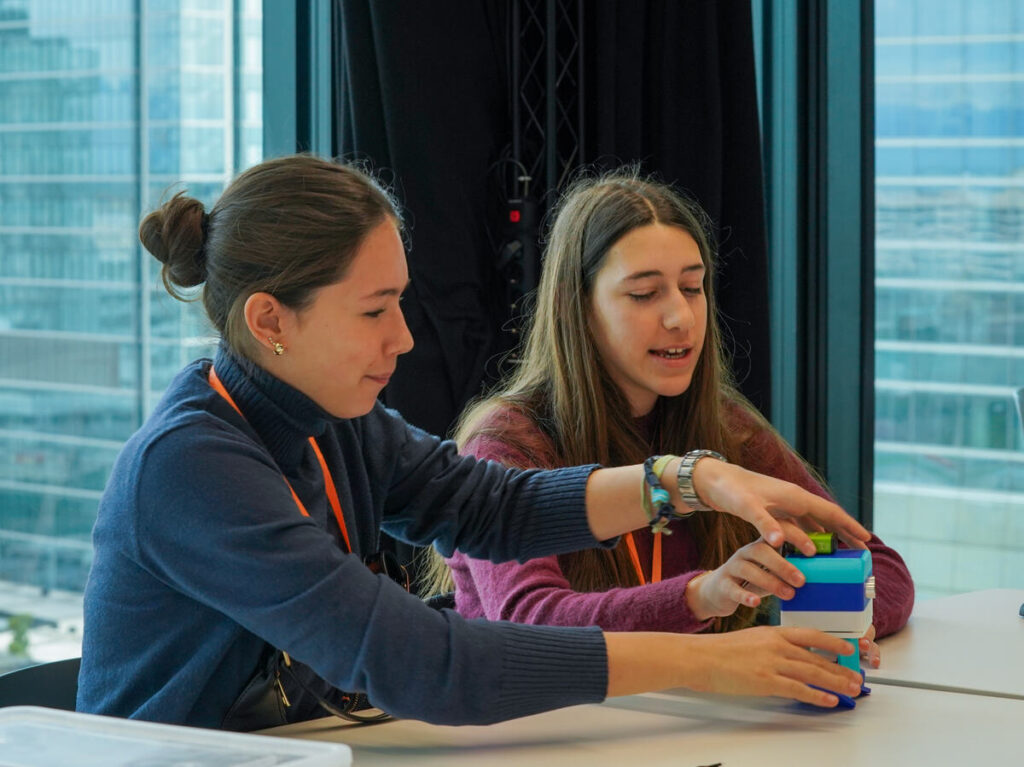
“I was really lucky,” Rafif continues. “My family always supported me. I grew up with two sisters and one brother, and my parents were always behind us. So, I never really faced any discouragement about pursuing something I wanted. But I did experience something like that with my daughter.
“She was about five or six years old here in Spain, and one day she came home crying, really upset. I asked her what happened, and she said her math teacher told her she was never going to be good at math. This was because she didn’t know how to multiply two numbers. The teacher told her she wasn’t going to learn it.
“I was heartbroken. I went to the school and gave the teacher a piece of my mind. But I knew I had to help my daughter. It took time, but that Saturday morning, we spent the whole time painting and cutting things. I would throw little math questions at her, like: If daddy wants three apples and your brother wants three, how many apples would you paint? By the end of the day, she realized she had learned multiplication just by playing.
“And seeing that moment in her eyes when she realized she could do math was incredible.”
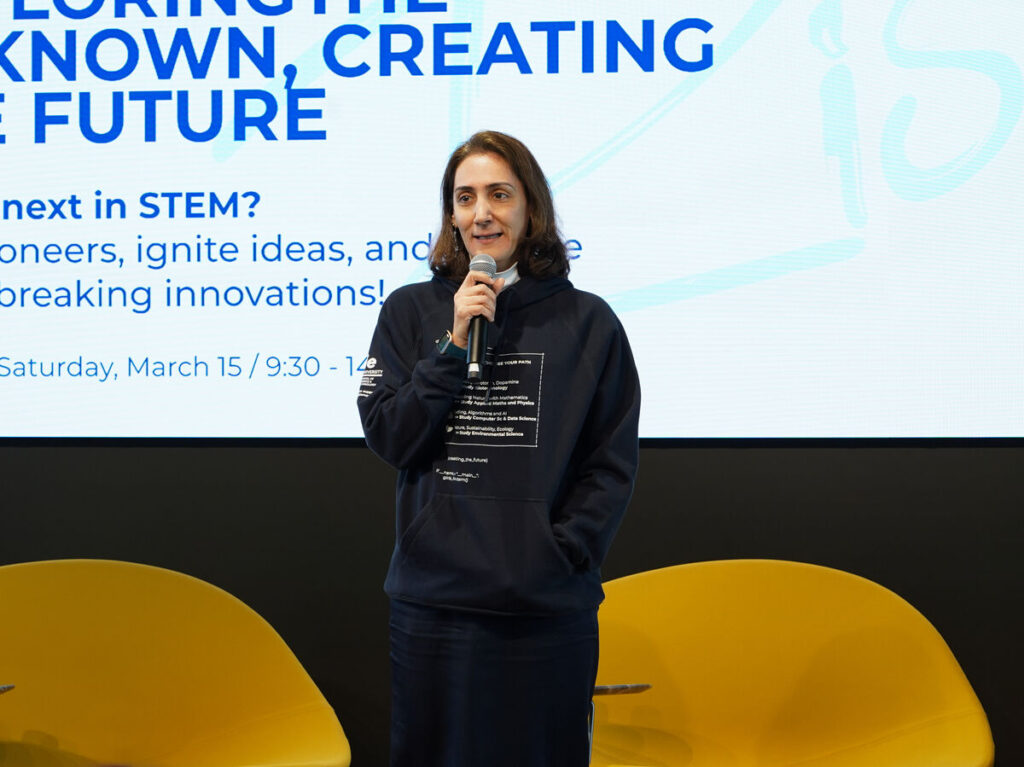
“It’s funny because she’s 13 now, and although she doesn’t particularly like math, she’s good at it. But that small comment from her teacher stayed with her. It affected her self-confidence, and even now, whenever she faces a challenge, her first reaction is that she’s not good at it. It’s tough to undo the damage of one small comment.”
Reflecting on the way forward, Rafif pointed to hands-on opportunities for girls in STEM: “It’s not about getting them to like STEM; it’s about showing them they can do it.” she explains. The more girls can engage with science, technology and engineering, the better they can see potential for a career.
The impact of a career in STEM
Let’s circle back to the STEM X Day in April. IE University partnered with ASTI Talent&Tech Foundation to invite girls from across Spain to a number of STEM workshops and talks—all of which were arranged by IE School of Science & Technology. To kick the day off, the girls received an inspiring speech from Mar Hurtado de Mendoza, IE University’s Vice President for Global Recruitment & Marketing. The topic? How much of an impact they could have—whether in coding for apps, designing sustainable cities or engineering spacecrafts to explore outer space.
Understanding why having women in STEM matters
“Right now, women make up only 28% of the STEM workforce worldwide—28%,” Mar began. “In fields like artificial intelligence and engineering, the numbers are even lower. Meanwhile, STEM careers are some of the fastest-growing, highest-paying, and most influential fields in our world today. Think about this: According to UNESCO, only 4% of Nobel laureates in science have been women.
“And none of those women are less capable than any of us here today.”
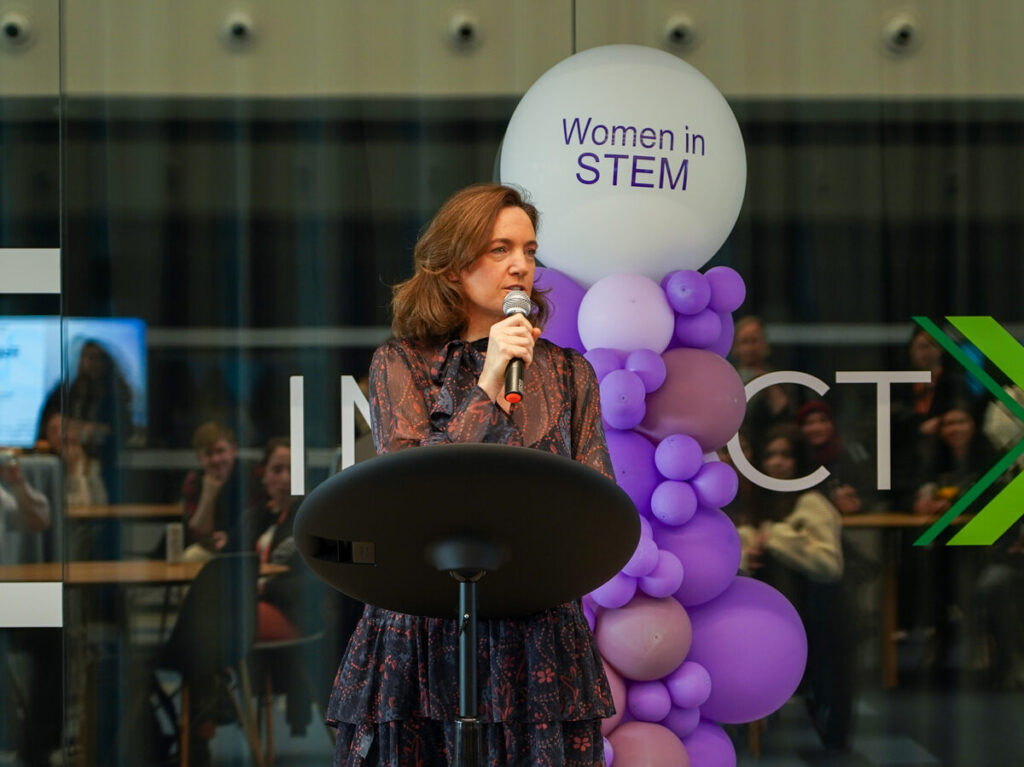
“In AI development, where algorithms influence critical areas like healthcare and finance, only 22% of professionals are women. That lack of diversity leads to real issues in technology that affect all of us. In medical research, for example, women’s health issues have historically been underfunded and underrepresented, leading to misdiagnoses and ineffective treatments for half the population.
“Let me share something with you that I learned from a book called “Closing the Gender Gap“. If you haven’t read it, I highly recommend it. In March 2019, NASA planned to conduct the first all-female spacewalk. Can you imagine how historic that would have been for women in space exploration? But guess what? The mission faced an unexpected problem: there weren’t enough appropriately sized spacesuits for female astronauts. Two astronauts, Anne McClain and Christina Koch, needed medium-sized suits, but only one was available. As a result, the all-female spacewalk was postponed, and a male astronaut participated instead. Now, a year later, in October 2019, Christina Koch and Jessica Meir successfully completed the first all-female spacewalk. But this was 2019—not 50 years ago. So, the question is: Can we afford to continue like this? The answer is absolutely not.”
“When teams lack diversity, such oversights can happen, leading to missed opportunities.”
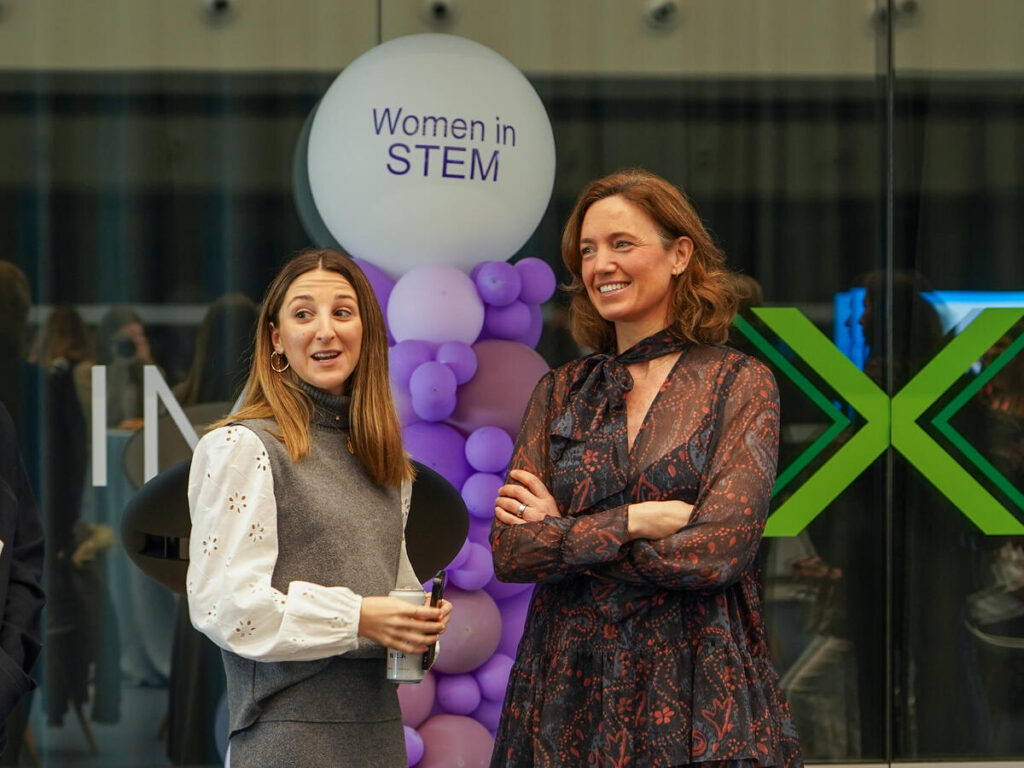
“Take Katherine Johnson, the mathematician who helped put astronauts on the moon, or Marie Curie, who is the only person to win Nobel Prizes in two different scientific fields. These women laid the foundation for medical breakthroughs we still rely on today. And Ada Lovelace, the first computer programmer, envisioned the first algorithm long before computers existed. And we don’t have to look to the past to find incredible women. Right now, as we speak, women are leading the way in some of the most exciting scientific and technological advancements. Dr. Jennifer Doudna, the co-inventor of CRISPR, a gene-editing technology that’s revolutionizing medicine. Dr. Katie Bouman, who developed the algorithm that produced the first-ever image of a black hole. Gitanjali Rao, a teenager who invented a device to detect lead contamination.
“The world is changing, and STEM is changing with it. Today, you don’t need to fit into a predefined mold to succeed. You can combine STEM with art, business or social impact—whatever excites you. You don’t have to choose between creativity and science, because science is creativity. Don’t feel like you need to follow the traditional path just because everyone else is doing it. Make your own path, because the future belongs to innovators who think differently.
“The future isn’t something we wait for. The future is something we create.”
Conversations with the next generation of women in STEM
Finally, let’s check in with some of the girls who joined us for STEM X Day. All of high-school age, they form part of the ASTI Talent&Tech Foundation, an initiative that boosts girls’ access to STEM outreach programs. Here’s what they had to say during the science, electronics and math workshops.
Claudia Pérez and Paula de la Iglesia
Can you tell me a little bit about what you’re doing?
Claudia: This is kefir; it’s like fermented milk. So, I’m mixing it somewhere in between cheese and milk.
Paula: What we’re doing is filtering the milk. So, we filter it, and then we get these little… what do you call them? Balls? And then that’s the kefir. Then we add milk, and we’re going to wait a day.
“After that, we’ll try it, and the longer we wait, the different the taste will be. The first day is sweeter, and the second day, it gets more acidic.”
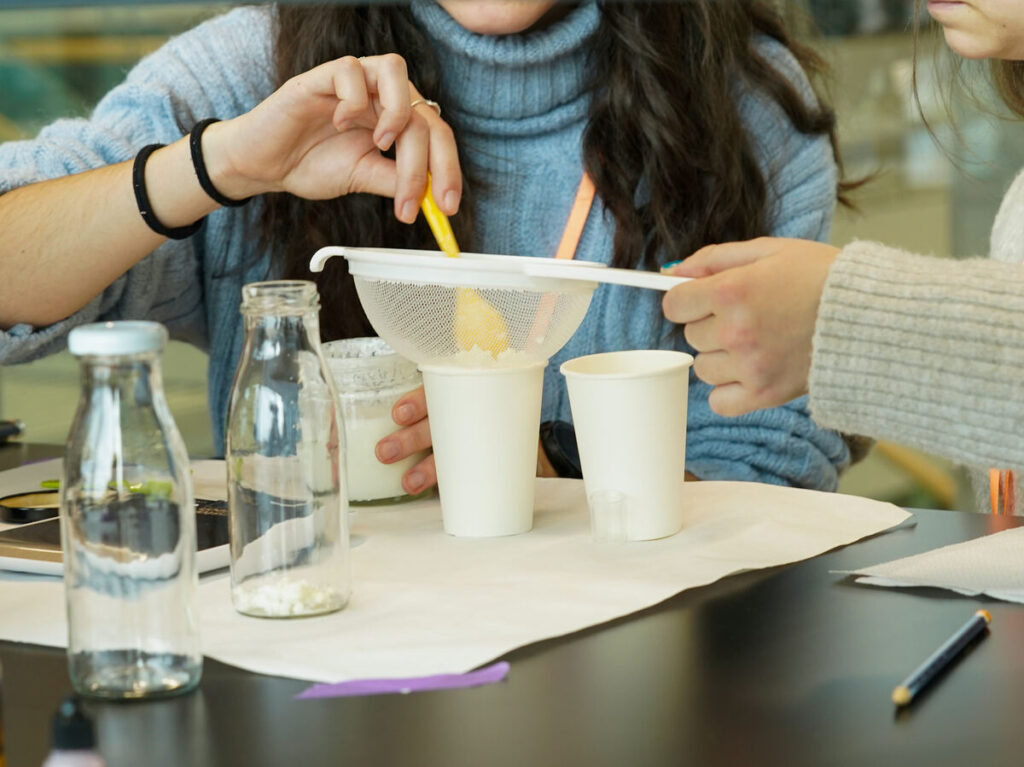
So what aspect of STEM are you interested in?
Claudia: Well, I actually like computer science, but I do find this really interesting.”
What about you?
Paula: In my case, I prefer chemistry and biology. This is more my type of thing. But I’m interested in everything.
How did you get involved in ASTI?
Claudia: Well, it was three years ago when a friend of a friend recommended it to me. Since then, I met her, and we’ve been going to all these events. This is my third time going.
Paula: For me, it was my teacher at school who told me about it, and I just ended up coming.
The Asti girls completed VX, robotics and chemistry challenges.
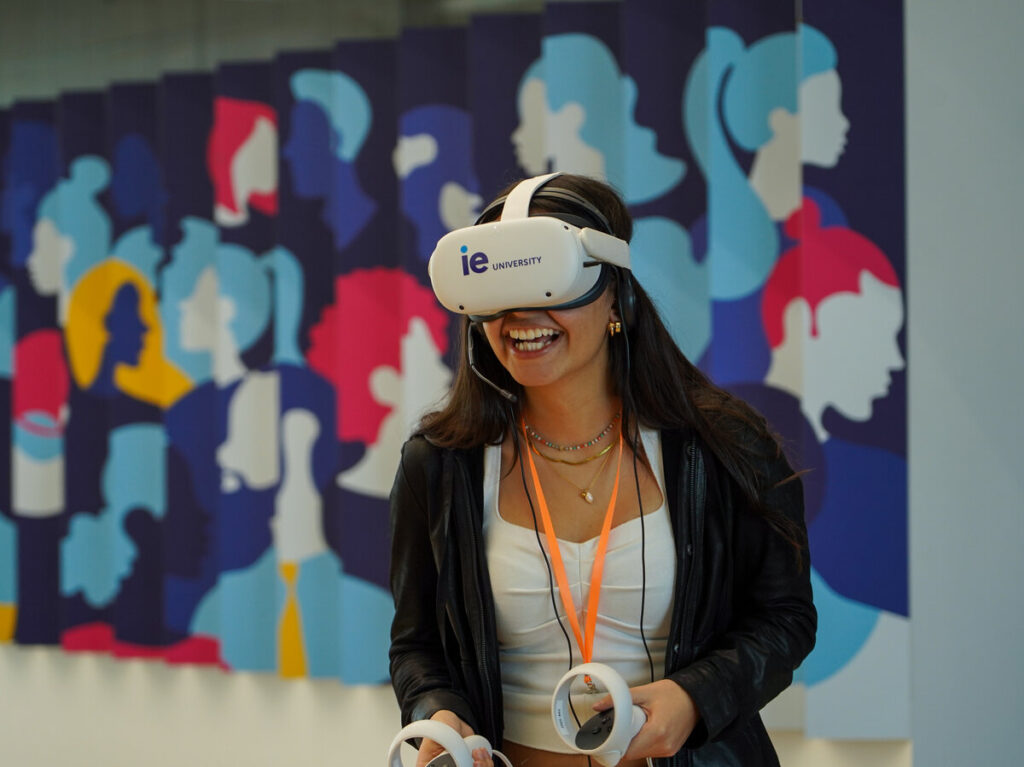
Rocio Abajo and Lucia Contreras
So, how did you come to be a part of ASTI?
Rocio: I have a friend who told me about some really cool activities in Burgos, and since I really like science and technology, I decided to try one out. I loved it, so now this is my second year in the program.
And what about you?
Lucia: I discovered ASTI because of my sister. She had no idea what to study, so she decided to give the ASTI program a try. I was in the same situation, not knowing what degree to pursue, so I started with this one. I think I’m going to study engineering thanks to this program.
So, what kind of impact do you want to have when you’re older?
Rocio: I want to study something related to the brain. I’d really love to find a way to end some of the brain illnesses that don’t have cures right now, like Alzheimer’s. That’s the kind of impact I’d like to make.
Lucia: I want to make people’s lives better, improve everything around us, and discover new things.
Are you enjoying today?
Rocio: Yeah, I’m actually enjoying this one more than last year because it’s more fun. The robot we’re making is cute!
Lucia: I’m enjoying today’s program too. I hope the rest of the day is just as good.
Sara de Juan
How did you get involved in ASTI?
I’m from Burgos, so I started with the Steam Talent Girl program three years ago, and now I’m really involved in it. I really like how they encourage women to participate in this field. I got started because they talked about it at my school. That’s how I heard about it.
I heard you won a competition?
Yes, last year I took part in the ASTI Rotary Challenge. We developed a prototype to complete some tasks, and we won two prizes: the design award and the project award. This year, I’m taking part again because it’s such a great experience, and we learn so much.
What kind of impact do you want to have when you’re older?
I’d like to make the world a better place using STEM and technology. And I believe that’s possible, right?
Support the next generation of girls in STEM
Be a part of change with IE School of Science & Technology.

Benjamin is the editor of Uncover IE. His writing is featured in the LAMDA Verse and Prose Anthology Vol. 19, The Primer and Moonflake Press. Benjamin provided translation for “FalseStuff: La Muerte de las Musas”, winner of Best Theatre Show at the Max Awards 2024.
Benjamin was shortlisted for the Bristol Old Vic Open Sessions 2016 and the Alpine Fellowship Writing Prize 2023.






